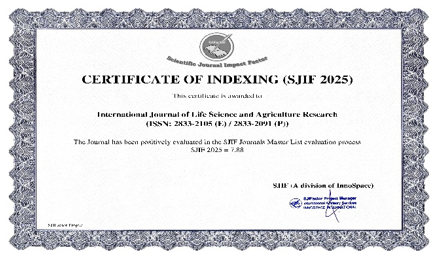Handling Bovine Ephemeral Fever (BEF) in Semanu District, Gunung Kidul Regency, Yogyakarta, Indonesia
DOI:
https://doi.org/10.55677/ijlsar/V03I6Y2024-04Keywords:
Bovine Ephemeral Fever, BEF, Cullicoids spp, Limousin CattleAbstract
Bovine Ephemeral Fever (BEF) is one of the most common diseases affecting cattle caused by single-stranded RNA (ssRNA) viruses sense negative, belongs to the family Rhabdoviridae and genus Ephemerovirus which are transmitted through vectors such as Cullicoids spp. BEF has a high morbidity rate and low mortality of around 2-5%. The cow belonging to Mr. Sayadi whose address is Nitikan Timur, Semanu, Gunung Kidul, Yogyakarta, a 3 year old male Limousin type with a body weight of 400 kg and a BCS of 3/5, experienced decreased appetite, hypersalivation, weakness and the results of the physical examination showed a high body temperature, namely 39.5OC, respiratory frequency 40x/minute, pulse frequency 60x/minute. Based on the results of the anamnesis, physical examination and clinical symptoms, the cow was diagnosed Bovine Ephemeral Fever (BEF) with fausta prognosis. The therapy given is an injection of the antihistamine Vetadryl®1 to overcome inflammation and Vitamin B Sanplex®2 as intramuscular supportive therapy.
References
Abdisa, T. 2017. Review on Practical Guidance of Veterinary Clinical Diagnostic Approach. International Journal of Veterinary Science and Research. 3(1):30 – 49.
Barigye, R., Melville, L.F., Davis, S., Wlash, S., Hunt, N., dan Hunt, R. 2016. Kinetics of Selected Plasma Cytokines During Innateadaptive Immune Response Transition In Adult Cattle Infected With Bovine Ephemeral Fever Virus. Veterinary Microbiology. 186:111-116.
He, C. Q., Liu, Y. X., Wang, H. M., Hou, P. L., He, H. B., Ding, N. Z. 2016. New Genetic Mechanism, Origin and Population Dynamic of Bovine Ephemeral Fever Virus. Veterinary Microbiology. 182:50-56.
Ministry of Agriculture. 2005.Indonesian Veterinary Medicine Index V Edition. Jakarta: Ministry of Agriculture.
Kirkland, P. 2016. Bovine Ephemeral Fever: Threeday Sickness. The Center for Food Security and Public Health. Ames, Iowa. Hal 1-4.
Nururrozi, A., Mulya, F., Soedarmanto, I., and Yanuartono. 2017.Bovine Ephemeral Fever in beef cattle in Gunung Kidul Regency, Yogyakarta (Case Report).Journal of Animal Science.27(1):101-106.
Plumb, D. C. 2011. Plumb’s Veterinary Drug Handbook, 7th Edition. Wisconsin: PharmaVet.
Ting, L. J., Lee. M. S., Lin, Y. H., Cheng, M. C., Lee, F. 2016. Invasion of Exotic Bovine Ephemeral Fever Virus into Taiwan in 2013-2014. Veterinary Microbiology. 182:15- 17.
Walker, P. J. 2014. The Merck Veterinary Manual: Bovine Ephemeral Fever. http://www.merckvetmanual.com/mvm/generalized_conditions/bovine_ephemeral_fe ver/overview _of_bovine_ephemeral_fever.html diakses pada 4 November 2023.
Downloads
Published
Issue
Section
License
Copyright (c) 2024 International Journal of Life Science and Agriculture Research

This work is licensed under a Creative Commons Attribution 4.0 International License.












